Immerse yourself in Briones's vibrant flavors and uncover hidden culinary gems with our expert insider guides. Plan an unforgettable trip today!
Read more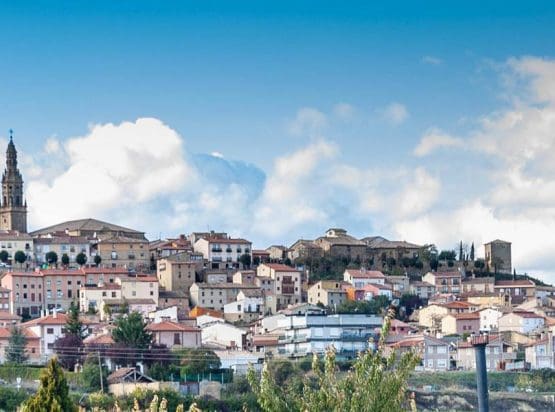
EXPLORE ALL OUR LA RIOJA WINE REGIONS GUIDE
Last updated: August 21, 2024
La Rioja Alavesa, the smallest of Rioja’s three subregions, is today responsible for producing some of the area’s most expensive and venerable wine. Across the zone, old vineyards planted in select sites produce expressions of Tempranillo that are simply magnificent – arguably the most refined and structured Tempranillo in the world. Much smaller amounts of excellent white wine, with a good acid balance, are also made in Alavesa, typically from a blend of Viura and Malvasia. The best examples are vinified and aged in oak barriques to spectacular effect: a clear competitor to white Burgundy.
Yet the zone’s reputation for superlative quality has become lost in the noise and furor over a massive schism that threatens to tear Rioja apart. Several years ago, the association of Rioja Alavesa producers (ABRA) demanded the creation of an entirely new appellation within the wider DO – part of Rioja Alavesa lies in the Basque country. In April 2019, ABRA voted in favor of a name change to the Association of Bodegas de Euskadi (ABE) while expanding its remit to all interested Basque wine producers. If the EU and Spanish authorities accept their final proposal, bottles of “Viñedos de Álava” will eventually hit the shelves, marking a significant change in the region.
However, the move is fiercely opposed by the region’s key stakeholders; the DO introduced rules in 2022 to prevent ex-Rioja wineries from selling their bottles as Rioja (for one year) if they elected to rejoin the appellation. According to some, the regulations were driven by rank bitterness on the part of the Consejo, which does not want a dynamic rival on its doorstep. This argument will go on and on.
Discover more about Spanish Wine
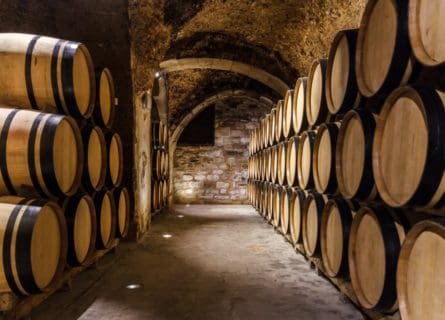
Rioja has played a pivotal role in Spanish affairs for over two millennia. In the 2nd century BC, this part of northeastern Spain became a major Roman stronghold; in the Middle Ages, it was a key staging post for the reconquest of the nation, a campaign waged by the Christian monarchs against the Moors. In the 1200s, the deacon and poet Gonzalo de Berceo wrote a homage to the wines of Rioja in verse, utilizing Castilian instead of the standardized Latin. This was a risky move – the Catholic establishment did not take kindly to having their authority challenged.
Church’s Role in Winemaking
Nevertheless, Castellano was eventually adopted as the preferred language in Spain, described by academics as ‘pigeon Latin’ no less. The church assumed a decisive role in winegrowing after the Benedictine monks of Cluny (Burgundy) arrived in Rioja to further their cause. Rioja Alavesa, due to its favorable soils and climate, witnessed an explosion in vine plantings in the 16th and 17th centuries. However, the size dwarfs it – and the importance – of the La Rioja Alta subzone.
In the 19th century, phylloxera became the catalyst for a revolution in Riojan winemaking. This parasite, inadvertently imported from the US, destroyed practically every vineyard in Bordeaux. This led to a mass exodus of merchants and producers who arrived in Rioja searching for new wine stocks. They soon realized Rioja’s untapped potential and shared new techniques for vinification and aging with the conservative Riojans in exchange for replenishing their wine supplies. This inevitably led to a new breed of winery modeled on the Bordeaux chateaux system. This firmament would harvest grapes from across the region to produce a range of blended wines, matured in barrel for several years.
Emerging Tensions
This formula has stood the test of time. The velvety, long-aged wines of CVNE, La Rioja Alta, and Lopez de Heredia remain incredibly popular in the 21st century. Yet the Rioja Consejo has yet to address ABE’s grievances, while tensions over homogeneous representation are bubbling under the surface. Fortunately, this has not affected quality in the region, while the variety of styles available—white, rosé, single-estate, single-varietal, and biodynamic—continues to grow.
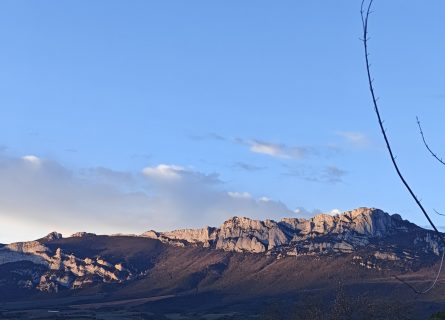
Few critics would deny that some of Rioja’s finest reds – and whites – are made in Alavesa. This is due to an advantageous combination of soil (primarily calcareous clay), the high proportion of Tempranillo grapes used, the temperate climate, and the south-facing aspect that most climats (vineyard sites) enjoy.
The majestic Sierra de Cantabria flanks Alavesa’s vineyards, which lie to the north of the Ebro. Some of this land falls under the administrative jurisdiction of the Basque Country rather than La Rioja, fueling the ongoing controversy over the Viñedos de Álava proposal.
For over a century, growers have tended to these vineyards near the area known as Conchas de Haro, a little to the east of Logrono. It is the northernmost of the three sub-regions, bordering Rioja Alta to the southwest and Rioja Oriental (formerly Rioja Baja) to the southeast.
It is also one of the coolest spots in the entire region. In the far northwest of the zone, some of the highest vineyards above Labastida once struggled to ripen under challenging vintages. But, the advent of climate change means that underripe wines are scarcely a problem today. The elevation is increasingly seen as the key to high-quality winemaking in Rioja.
The Impact of Altitude on Wine Quality
Indeed, one of the key differentiating factors in the region’s terroir is altitude—vineyards typically lie at elevations of between 400 and 1200m, resulting in a higher degree of diurnal temperature variation and, consequently, a signature freshness and good acidity in the wines. The best of the region’s red-and-white output offers the perfect balance between force and finesse, elegance and power.
They are age-worthy, structured wines that will evolve over the decades and give pleasure almost immediately after bottling. Very much a “have your cake and eat it” scenario.
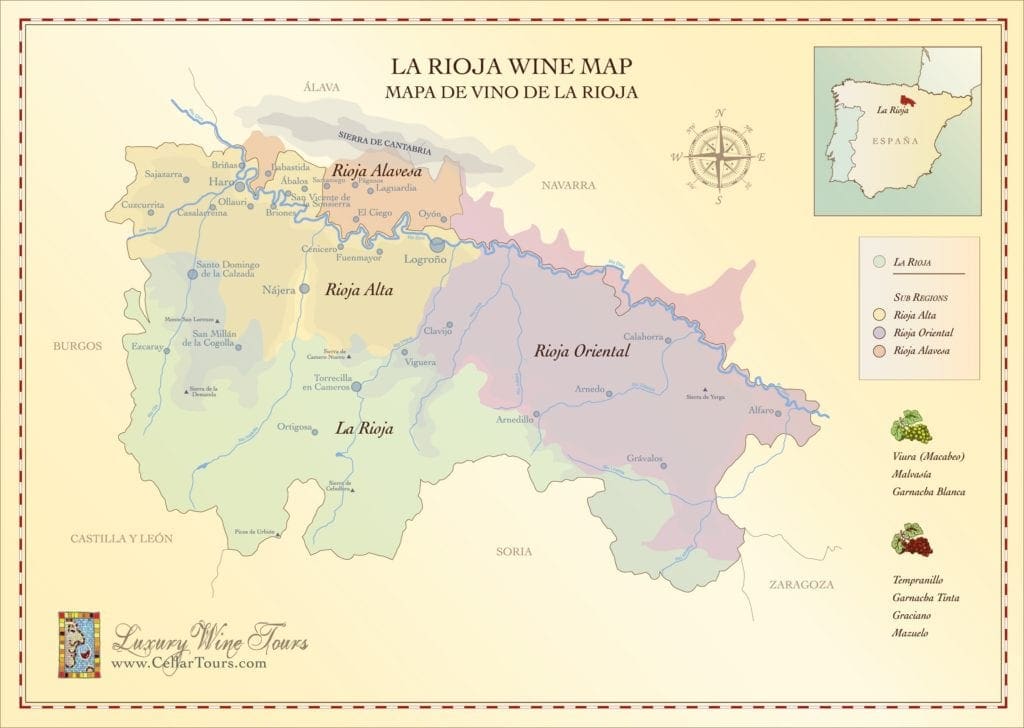
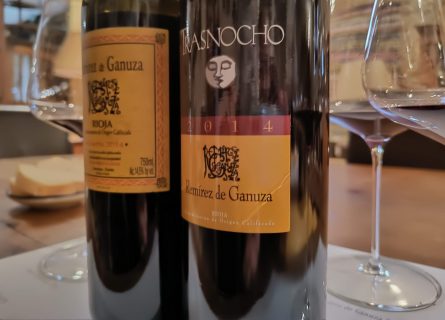
Traditionally, Rioja’s other key red grapes – Garnacha (Grenache), Graciano, and Mazuelo (Carignan) – have played a relatively minor supporting role in Rioja Alavesa, but this is not to the region’s detriment. 100% Tempranillo wines can be as memorable and age-worthy as the classic blends incorporating all four varieties.
Unlike neighboring Rioja Alta, the critical mass of wineries in the subregion have embraced modernity, eschewing long periods of barrel aging for a terroir-driven approach to crafting their wines. Properties such as Remelluri and Contino use French oak rather than American, macerating their wines for a far longer period than was practiced in the 20th century—the result – potent and brooding reds, brimming with tannin and extract.
Oak-Aged Whites
Rioja Alavesa is also forging a reputation as a serious producer of oak-aged whites. According to Jose Urtasun, owner of Remirez de Ganuza, growers are planting more Viura in the zone as the global demand for affordable alternatives to Burgundy continues to grow.
Of course, not every bottle is inspiring—some winemakers aim for easy-drinking neutrality with a decent cut of acidity. At the opposite end of the scale is Remirez de Ganuza’s Olagar, a white of immense ‘breeding,’ depth, and complexity. It challenges the greatest wines of Burgundy in everything but the price.
A Guide to the Wine Types and Classifications in La Rioja: Read more
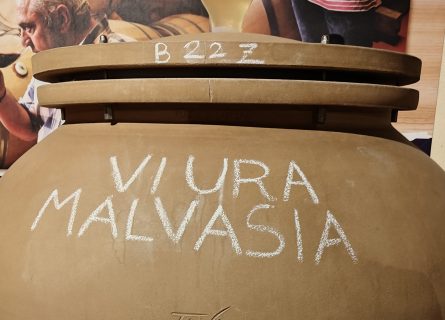
Rioja and Champagne have more in common than you may think. Like France’s premium sparkling producer, Rioja’s vineyards are controlled by thousands of growers, many of whom historically made wine that was sold in bulk to the large bodegas.
There are other parallels: as in Champagne, big producers still believe in blending wines from climatically different areas, while fewer than ten wineries control 50 percent of the total production.
However, while Champagne’s grower movement has matured, Rioja is still relatively new to artisan production and micro cuveés; the DO historically imposed strict rules on the minimum quantities allowed for bodegas who wished to export their wines, which handicapped niche outfits. But as markets have expanded and consumer attitudes have evolved, Rioja has transformed from a region producing a (largely) uniform wine style into Spain’s most heterogeneous vineyard.
This has led to a sharp rise in the number of small grower bottlings as families take advantage of the growing demand for site-specific and authentic wines. Rioja’s challenge today is to satisfy the priorities of winemakers who demand a more stratified approach to terroir segmentation while considering the feelings of traditionalists. The crisis in Rioja Alavesa over a proposed succession from the appellation is just the latest symptom of this divide.
The Future of Rioja: Unity or Division?
Can Rioja find a way to keep everyone happy? The introduction of the single-vineyard category cements the desire to market a point of difference through terroir and not simply aging before release. Moreover, it shows that the Consejo is listening to voices on both sides of the debate.
Compared to 40 years ago, Rioja is a decidedly progressive region – terroir delineation was a major taboo in the 1980s. Now it’s openly talked about. Yet for the hot heads of Rioja Alavesa, it has not been enough to quell their desires for a revolution. So it remains to be seen how far Rioja is willing to travel to keep everyone united under one appellation banner. The battle has probably only just begun.
Chardonnay is a green-skinned grape varietal native to the Burgundy wine region in France and one of the most popular varieties worldwide.
Find out moreDiscover the Allure of Grenache Blanc: Full-Bodied White Wine from Northeastern Spain. Experience the Richness of High Alcohol, Low Acidity Wines.
Find out moreExplore the allure of Malvasía de Rioja grape. Uncover its origins, tasting notes, and its contribution to the exquisite wines of Rioja.
Find out moreThe sauvignon blanc grape varietal, originally from the Bordeaux region of France, is now one of the world's most loved white varieties.
Find out moreExplore the allure of Tempranillo Blanco: La Rioja, Spain's unique white grape. Born from a red Tempranillo mutation, it unveils a refreshing twist in every sip.
Find out moreDiscover Viura: Rioja's Prominent White Grape & Catalonia's Macabeo. Explore its versatility in exquisite wines. A must-read for wine enthusiasts.
Find out moreDiscover the irresistible allure of Cabernet Sauvignon—a worldwide favorite with robust, dark-bodied flavor. Unleash your wine journey today!
Find out moreGarnacha: Spain's Red Gem. Akin to Pinot Noir, it bridges terroir and winemaking, crafting captivating expressions.
Find out moreIs a red grape variety that is primarily grown in Spain's Rioja region. Known for its thick skins, small berries, and low yields, this grape produces wines that are deeply colored, highly tannic, and full-bodied, with a range of aromas from dark fruit to spices and leather
Carignan is a red grape variety that grows mostly in Southern France, and is often used as a blending grape
Find out moreDiscover Tempranillo: Spain's iconic red grape. From Ribera del Duero to Toro, it yields concentrated wines. Explore its synonyms and unleash its prowess.
Find out more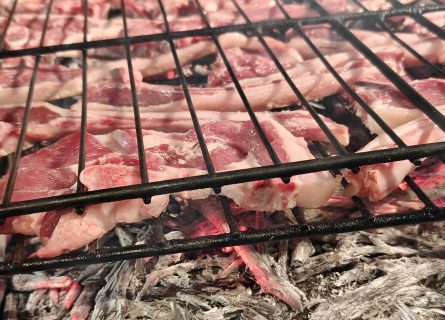
Rioja Alavesa is fortunate to have the town of Laguardia as its handsome capital. Built on a hill in the Basque Country to repel the Moors, it is a picturesque, atmospheric, walled town riddled with a maze of underground cellars, pretty squares, and excellent restaurants. In the evening, its old center is transformed into a vibrant meeting place, complete with excellent tapas bars which serve tempting morsels on the countertops. Wander from bar to bar, ‘drinking in’ the buzzy atmosphere and exquisite culinary creations: highlights include champis (butter-fried garlic mushrooms), chuletas (milk-fed lamb chops), sizzling prawns in garlic, and the always welcome chorizo.

Immerse yourself in Briones's vibrant flavors and uncover hidden culinary gems with our expert insider guides. Plan an unforgettable trip today!
Read more
Immerse yourself in Haro's vibrant flavors and uncover hidden culinary gems with our expert insider guides. Plan an unforgettable trip today!
Read more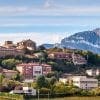
Immerse yourself in Laguardia's vibrant flavors and uncover hidden culinary gems with our expert insider guides. Plan an unforgettable trip today!
Read more
Immerse yourself in Logroño's vibrant flavors and uncover hidden culinary gems with our expert insider guides. Plan an unforgettable trip today!
Read moreIf you would like us to customize an exclusive luxury tour, contact us and let us know your travel plans. We offer luxury food and wine tours for private groups of a mininium two guests. In addition, all of our private, chauffeured tours are available year-round upon request.

